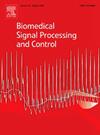心脏和大脑血管自动分割:发展多模态和标签高效深度学习技术的趋势
IF 4.9
2区 医学
Q1 ENGINEERING, BIOMEDICAL
引用次数: 0
摘要
心脑血管疾病仍然是世界范围内死亡的主要原因,因此准确的血管分割对于科学研究和临床应用都至关重要。然而,由于血管形状薄或模糊、血管与背景像素分布不平衡以及成像伪影的干扰等因素,从医学图像中分割心脑血管结构极具挑战性。这些困难使得手动或半手动分割方法耗时,劳动密集,并且容易在观察者之间发生变化。因此,对自动分割算法的需求越来越大。本文首次全面介绍了用于心脑血管分割的深度学习技术,涵盖了心脑血管的监督、半监督和无监督方法。我们回顾了最先进的方法,包括U-Net、生成对抗网络(gan)、图卷积网络(GCNs)、变压器模型、扩散模型(如去噪扩散概率模型(DDPM))、基础模型(如分段任何模型(SAM)和SAM- vmnet模型),以及将多个模型与有效融合技术相结合的混合方法。我们讨论了这些方法的优点和局限性,强调了它们的临床适用性。我们的分析确定了关键的挑战,包括对注释数据的依赖和单模态方法的局限性,单模态方法无法充分利用多模态成像源提供的丰富信息。我们强调了标签高效、多模态深度学习作为提高分割精度和鲁棒性的一个有前途的方向的重要性。该调查为研究人员和临床医生提供了宝贵的见解,旨在指导下一代工具的开发,以更准确地诊断和心脑血管疾病的个性化治疗策略。本文章由计算机程序翻译,如有差异,请以英文原文为准。
Automating vessel segmentation in the heart and brain: A trend to develop multi-modality and label-efficient deep learning techniques
Cardio-cerebrovascular diseases remain the leading cause of mortality worldwide, making accurate blood vessel segmentation essential for both scientific research and clinical applications. However, segmenting cardio-cerebrovascular structures from medical images is highly challenging due to factors such as thin or blurred vascular shapes, imbalanced vessel-to-background pixel distribution, and interference from imaging artifacts. These difficulties render manual or semi-manual segmentation methods time-consuming, labor-intensive, and prone to inter-observer variability. Consequently, there is an increasing demand for automated segmentation algorithms. This paper presents the first comprehensive survey of deep learning techniques for cardio-cerebrovascular segmentation, covering supervised, semi-supervised, and unsupervised approaches for both cardiac and cerebral vasculature. We review state-of-the-art methods, including U-Net, Generative Adversarial Networks (GANs), Graph Convolutional Networks (GCNs), transformer models, diffusion models such as Denoising Diffusion Probabilistic Models (DDPM), foundation models like Segment Anything Model (SAM) and the SAM-VMNet models, as well as hybrid approaches combining multiple models with effective fusion techniques. We discuss the strengths and limitations of these methods, emphasizing their clinical applicability. Our analysis identifies key challenges, including the reliance on annotated data and the limitations of single-modality approaches, which fail to fully leverage the rich information available from multi-modal imaging sources. We highlight the importance of label-efficient, multi-modal deep learning as a promising direction for improving segmentation accuracy and robustness. This survey provides valuable insights for researchers and clinicians, aiming to guide the development of next-generation tools for more accurate diagnoses and personalized treatment strategies for cardio-cerebrovascular diseases.
求助全文
通过发布文献求助,成功后即可免费获取论文全文。
去求助
来源期刊

Biomedical Signal Processing and Control
工程技术-工程:生物医学
CiteScore
9.80
自引率
13.70%
发文量
822
审稿时长
4 months
期刊介绍:
Biomedical Signal Processing and Control aims to provide a cross-disciplinary international forum for the interchange of information on research in the measurement and analysis of signals and images in clinical medicine and the biological sciences. Emphasis is placed on contributions dealing with the practical, applications-led research on the use of methods and devices in clinical diagnosis, patient monitoring and management.
Biomedical Signal Processing and Control reflects the main areas in which these methods are being used and developed at the interface of both engineering and clinical science. The scope of the journal is defined to include relevant review papers, technical notes, short communications and letters. Tutorial papers and special issues will also be published.
 求助内容:
求助内容: 应助结果提醒方式:
应助结果提醒方式:


